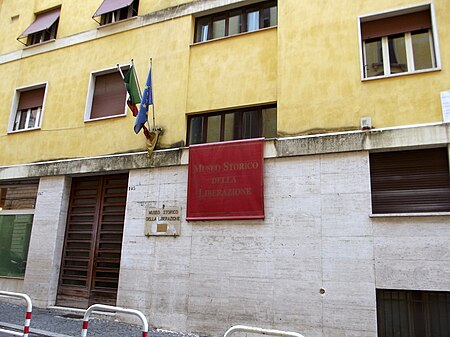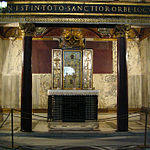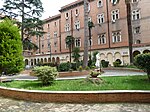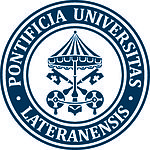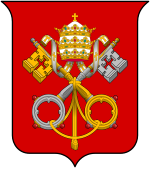The Archbasilica Cathedral of the Most Holy Savior and of Saints John the Baptist and John the Evangelist in the Lateran (Italian: Arcibasilica del Santissimo Salvatore e dei Santi Giovanni Battista ed Evangelista in Laterano), also known as the Papal Archbasilica of Saint John [in] Lateran, Saint John Lateran, or the Lateran Basilica, is a Catholic cathedral church of the Diocese of Rome in the city of Rome, and serves as the seat of the bishop of Rome, the pope. The archbasilica lies outside of Vatican City proper, which is located approximately 4 kilometres (2.5 mi) to the northwest. Nevertheless, as properties of the Holy See, the archbasilica and its adjoining edifices enjoy an extraterritorial status from Italy, pursuant to the terms of the Lateran Treaty of 1929.The church is the oldest and highest ranking of the four major papal basilicas as well as one of the Seven Pilgrim Churches of Rome, holding the unique title of "archbasilica". Founded in 324, it is the oldest public church in the city of Rome, and the oldest basilica of the Western world. It houses the cathedra of the Roman bishop, and has the title of ecumenical mother church of the Catholic faithful. The building deteriorated during the Middle Ages and was badly damaged by two fires in the 14th century. It was rebuilt in the late 16th century during the reign of Pope Sixtus V. The new structure's interior was renovated in the late 17th century, and its façade was completed in 1735 under Pope Clement XII.
The current rector is Cardinal Archpriest Angelo De Donatis, Vicar General for the Diocese of Rome. The President of the French Republic, currently Emmanuel Macron, is ex officio the "First and Only Honorary Canon" of the archbasilica, a title that the heads of state of France have possessed since King Henry IV.
The large Latin inscription on the façade reads: Clemens XII Pont Max Anno V Christo Salvatori In Hon SS Ioan Bapt et Evang. This abbreviated inscription translates as: "Pope Clement XII, in the fifth year [of his Pontificate, dedicated this building] to Christ the Savior, in honor of Saints John the Baptist and [John] the Evangelist". The inscription indicates, with its full title (see below), that the archbasilica was originally dedicated to Christ the Savior and, centuries later, co-dedicated to Saint John the Baptist and Saint John the Evangelist. Christ the Savior remains its primary dedication, and its titular feast day is 6 August, the Transfiguration of Christ. As the cathedral of the pope as bishop of Rome, it ranks superior to all other churches of the Catholic Church, including Saint Peter's Basilica.
